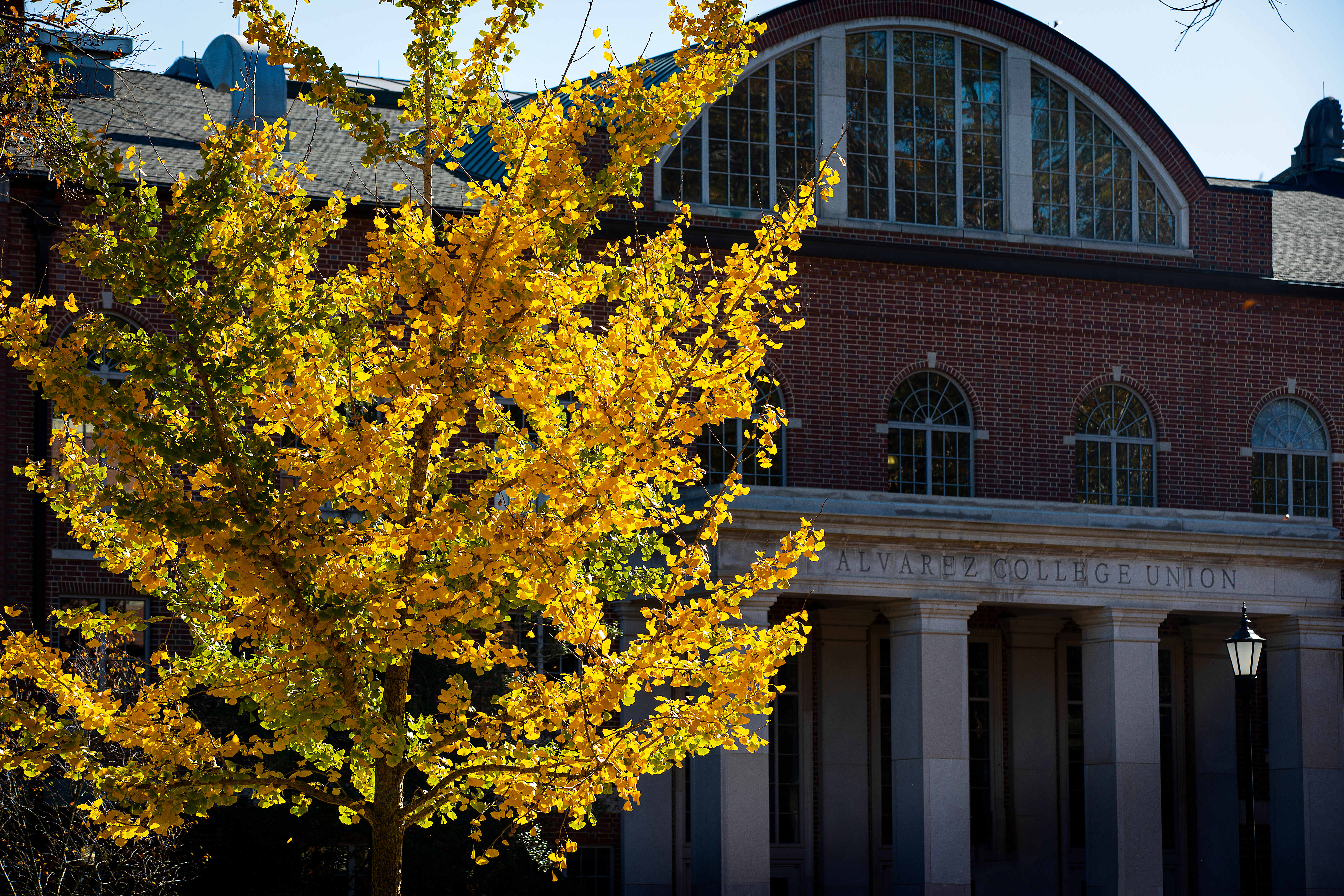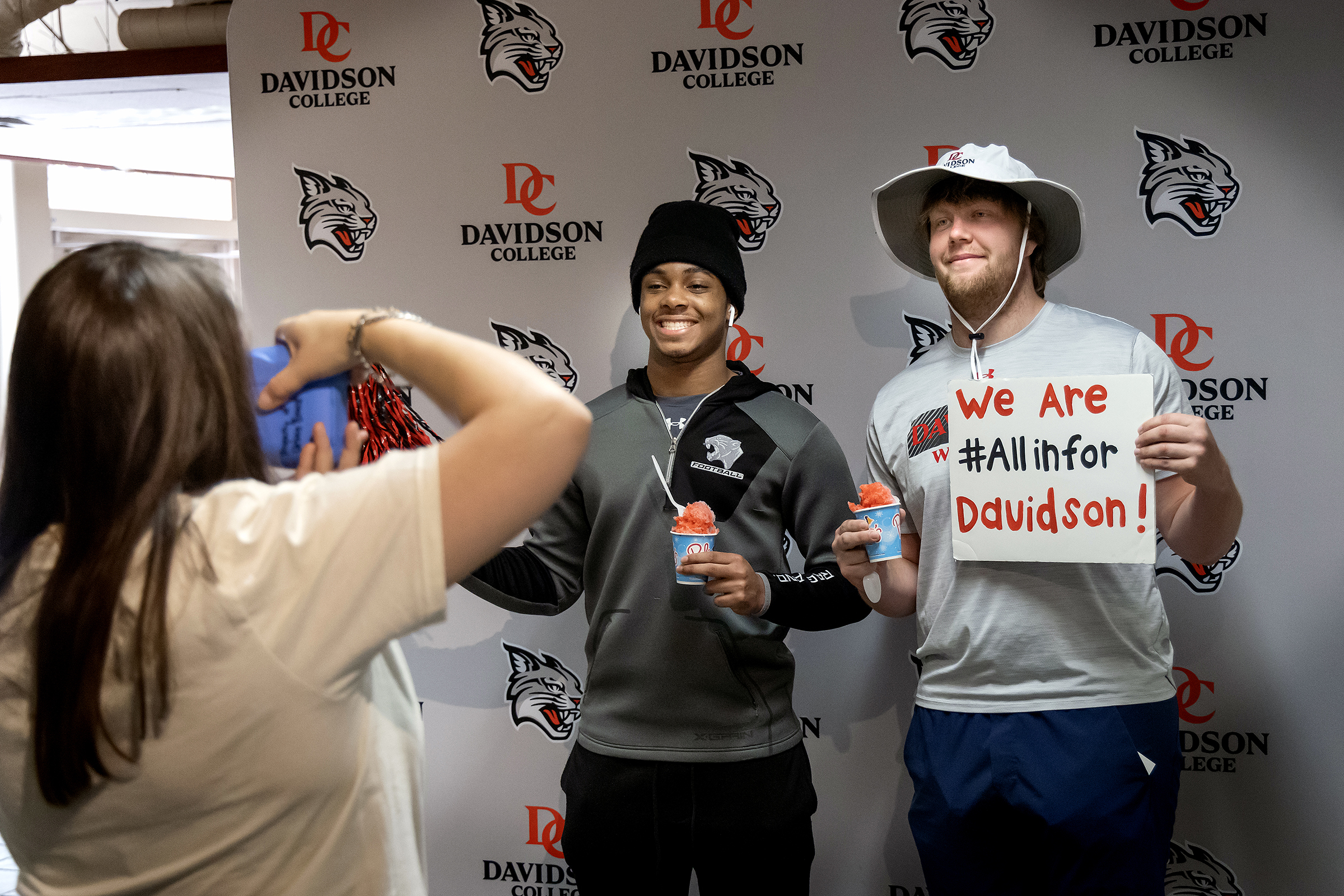Professor-Student Bracketology Collaborations Lead to Jobs, Internships, New Research
March 13, 2017
A professor-student collaboration that began nearly a decade ago has spawned a new way of looking at data analytics, as well as research collaborations involving more than 50 students and alumni and multiple private- and public-sector partnerships.
The NBA league office, Chicago Bulls, data analytics firm Tresata—these are just some of the places alumni are applying what they learned as student researchers and collaborators under Professor Tim Chartier. This list leaves out the notable internship sites that host Chartier's current student collaborators.
Chartier's work in the field colloquially known as "bracketology" started by accident. Chartier and his students were researching methods of ranking for product recommendations (think: Netflix recommendations or Google search results) and, in 2009, they turned to the annual NCAA basketball tournament to test their ideas. With College of Charleston collaborator Amy Langville and student Erich Kreutzer, Chartier developed a mathematical model for predicting NCAA tournament victors. Their first attempt was a stunning success, producing brackets that outperformed 97 percent of more than four million entries.
The next year, Chartier did what he does best—explained the problem to his students and worked in tandem with them to solve it.
Now, every March, Chartier and his students use numerical linear algebra to analyze data and develop algorithms to predict the outcome of March Madness games based on a variety of factors related to team performance. They include strength of schedule, wins at different times of the season, wins at home versus away and ability to win consecutive games.
The students share in the excitement of the March media onslaught, prepping Chartier for interviews and helping to answer questions from reporters around the world.
"The joy is in the collaborative journey for me," Chartier said. "I enjoy working together, watching the students work, learn and grow, and learning from them as they explore a topic."
Beyond the March MATHness website, where anyone with an internet connection can use the method to create a mathematically sound bracket, the project has yielded a body of knowledge that is now widely applied beyond sports analytics, along with countless opportunities for students to gain real-world experience before they graduate.
Choosing a Winning March Madness NCAA Tournament Bracket
Highly sought after “bracketologist” Prof. Tim Chartier presents his March Madness method to visitors from Woodlawn School. Every March, Chartier and his students use numerical linear algebra to analyze data and develop algorithms to predict the outcome of March Madness games based on a variety of factors related to team performance. They include strength of schedule, wins at different times of the season, wins at home versus away and ability to win consecutive games.
Building Momentum
One particularly successful offshoot to Chartier's bracketology is "Cats Stats," a student-driven sports data analysis group. In 2013, students Miles Abbett '14, Ford Higgins '14 and Seth Kindig '14, launched a collaboration with the Davidson College men's basketball coaching staff to gather data on Davidson's home games and analyze it with coaches. The group has become such a valued part of the game experience that they are now assigned a courtside station on press row for their work.
The Cats Stats program has exploded, growing from a handful of students focused on basketball to a group of approximately 40 students who dig through data on several sports at Davidson and from nearby high schools.
The local initiatives have opened up employment and internship opportunities, and Davidson Cats Stats alumni are highly sought-after in the quickly growing field. Many of the Cats Stats students who graduated are now working for pro sports teams or other firms.
- Ross Kruse '17 worked in the NBA league office analyzing officials and their calls.
- Miles Abbett '14 works for the Chicago Bulls.
- Ford Higgins '14 works in the NBA league office.
- Graham Haines '18 had an internship with the WNBA's Chicago Sky team.
- Mason Lin '17 worked at Oxford University in a financial analytics group.
- And George Baldini '19 got a job with the Charlotte-based data analytics firm Tresata, which also employs Chartier as chief researcher.
Jason Feldman '17 is spending this semester analyzing data for the Carolina Panthers football team.
"What stood out to the Panthers was the depth of his experience so early in his college career," Chartier said. "They get resumes all the time, but for a student barely into his junior year to have several strong references meant a lot in terms of credibility."
In the process, the pro football team realized Chartier and his students could serve the organization more broadly—they'll be working together on next season's draft.
A New Method
Grant McClure '17 and Ross Kruse '17, two students steeped in the art of bracketology who have studied under Chartier, are hoping their new "March Madness" model will outperform even Chartier's method.
While no one has ever generated a perfect bracket, adopters of the Davidson algorithm have created brackets that beat up to 99 percent of the millions of those submitted. McClure and Kruse have developed a new model that employs a type of artificial intelligence known as machine learning. The process of machine learning is similar to that of data mining, and allows computers to "learn" without being explicitly programmed.
Their system predicts the outcome of a modern game based on 10 years of previous game results between teams that are similar to the current teams in both style and skill. The emphasis on style allows the system to predict upsets that might otherwise be missed. The computer constantly refines its results based on historical game results and changes in style of the current teams.
Chartier credits the synergy that comes from mathematics and computer science being housed in the same department for opening up so many opportunities for students. Students can major in either subject, and the courses they take in one area tend to benefit them in the other.
"I didn't teach machine learning to Ross and Grant," Chartier said. "They got that in another course. I knew enough about machine learning to help guide their work, but they brought in the specific expertise they needed."
Research collaborations and programs like Cats Stats benefit faculty, students, college partners and potential employers.
"Davidson's curriculum is particularly well suited for today's marketplace. Students need a skill set in computer science, but the ability to think broadly and bring in other fields is important in data analysis," Chartier said. "The process of mining it, searching it, asking the right questions about it, and then interpreting the data and communicating the results is what our students excel at."
Bill Giduz & Lisa Patterson
bigiduz@davidson.edu, lipatterson@davidson.edu
704-894-2244, 704-894-2130



